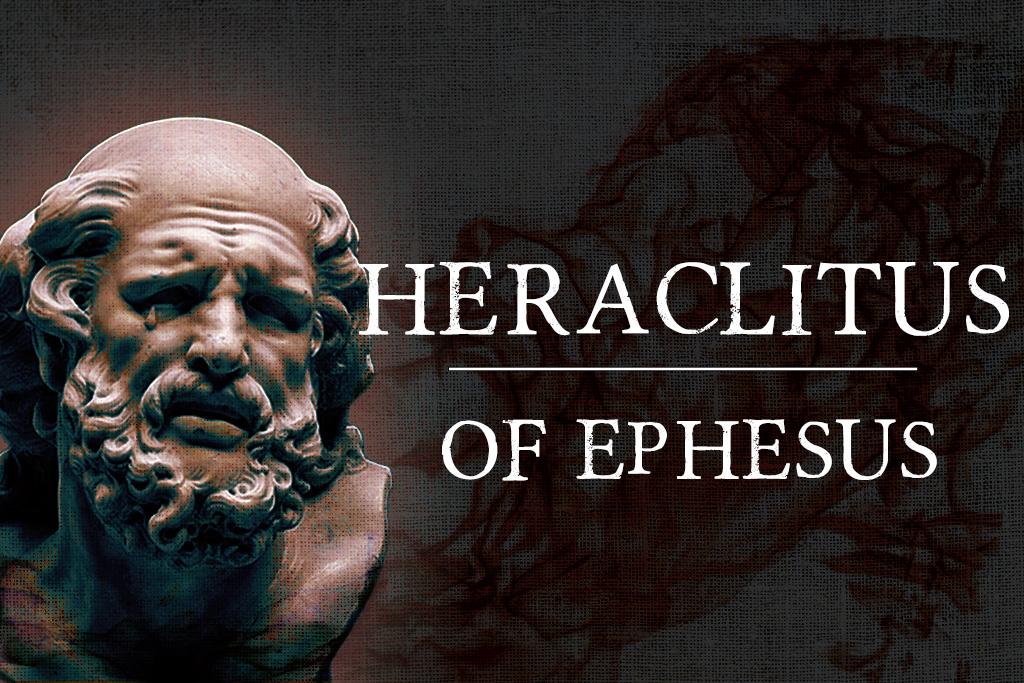This episode is a collaboration with the artist Stian van Wyck. Check out Stian’s work over at Instagram https://www.instagram.com/goatman_stan/.
The Presocratic Heraclitus of Ephesus is a philosopher’s philosopher. His work was beloved by Socrates, Plato, Hegel, Nietzsche and Heidegger. The philosopher from Ephesus is commonly known as the philosopher of fire (thanks to Aristotle) or, for those with a little more nuance, he is known as the philosopher of panta rei or flux — of constant never-ending change.
But there is another side of Heraclitus’s philosophy that is less talked about and that is his philosophy of Logos. This element of the Presocratic philosopher’s work was taken up by the Gospel writer John who opened his Gospel with the line “In the beginning was there was the Logos and the Logos was with God and the Logos was God”. John wrote his work in Ephesus and so the comparison with Heraclitus can’t be avoided.
For Heraclitus Logos is the unchanging eternal principle that is the true nature of reality. That leaves us with something of a paradox in a way that is very similar to Parmenides, who also wrote about the contrast between the world of Being and the world of Becoming.
As well as Parmenides we will also be looking at how Heraclitus’s work can be situated as part of the tradition of the Perennial Philosophy and can be fruitfully connected with the Eastern philosophies of Buddha Gautama and of Lao-Tzu.
____________________
Further Reading:
– Curd, P. and McKirahan, R.D., 1996. A Presocratics Reader
– Geldard, R.G., 2000. _Remembering Heraclitus_. Richard Geldard.
____________________
⌛ Timestamps:
0:00 Introduction
2:06 Aristotle’s View
4:22 The Other Half of Heraclitus
6:52 Heraclitus and the Mystical Tradition
This episode is a collaboration with the artist Stian van Wyck. Check out Stian’s work over at Instagram https://www.instagram.com/goatman_stan/.
The Presocratic Heraclitus of Ephesus is a philosopher’s philosopher. His work was beloved by Socrates, Plato, Hegel, Nietzsche and Heidegger. The philosopher from Ephesus is commonly known as the philosopher of fire (thanks to Aristotle) or, for those with a little more nuance, he is known as the philosopher of panta rei or flux — of constant never-ending change.
But there is another side of Heraclitus’s philosophy that is less talked about and that is his philosophy of Logos. This element of the Presocratic philosopher’s work was taken up by the Gospel writer John who opened his Gospel with the line “In the beginning was there was the Logos and the Logos was with God and the Logos was God”. John wrote his work in Ephesus and so the comparison with Heraclitus can’t be avoided.
For Heraclitus Logos is the unchanging eternal principle that is the true nature of reality. That leaves us with something of a paradox in a way that is very similar to Parmenides, who also wrote about the contrast between the world of Being and the world of Becoming.
As well as Parmenides we will also be looking at how Heraclitus’s work can be situated as part of the tradition of the Perennial Philosophy and can be fruitfully connected with the Eastern philosophies of Buddha Gautama and of Lao-Tzu.
____________________
Further Reading:
– Curd, P. and McKirahan, R.D., 1996. A Presocratics Reader
– Geldard, R.G., 2000. _Remembering Heraclitus_. Richard Geldard.
____________________
⌛ Timestamps:
0:00 Introduction
2:06 Aristotle’s View
4:22 The Other Half of Heraclitus
6:52 Heraclitus and the Mystical Tradition
Leave A Comment
This episode is a collaboration with the artist Stian van Wyck. Check out Stian’s work over at Instagram https://www.instagram.com/goatman_stan/.
The Presocratic Heraclitus of Ephesus is a philosopher’s philosopher. His work was beloved by Socrates, Plato, Hegel, Nietzsche and Heidegger. The philosopher from Ephesus is commonly known as the philosopher of fire (thanks to Aristotle) or, for those with a little more nuance, he is known as the philosopher of panta rei or flux — of constant never-ending change.
But there is another side of Heraclitus’s philosophy that is less talked about and that is his philosophy of Logos. This element of the Presocratic philosopher’s work was taken up by the Gospel writer John who opened his Gospel with the line “In the beginning was there was the Logos and the Logos was with God and the Logos was God”. John wrote his work in Ephesus and so the comparison with Heraclitus can’t be avoided.
For Heraclitus Logos is the unchanging eternal principle that is the true nature of reality. That leaves us with something of a paradox in a way that is very similar to Parmenides, who also wrote about the contrast between the world of Being and the world of Becoming.
As well as Parmenides we will also be looking at how Heraclitus’s work can be situated as part of the tradition of the Perennial Philosophy and can be fruitfully connected with the Eastern philosophies of Buddha Gautama and of Lao-Tzu.
____________________
Further Reading:
– Curd, P. and McKirahan, R.D., 1996. A Presocratics Reader
– Geldard, R.G., 2000. _Remembering Heraclitus_. Richard Geldard.
____________________
⌛ Timestamps:
0:00 Introduction
2:06 Aristotle’s View
4:22 The Other Half of Heraclitus
6:52 Heraclitus and the Mystical Tradition


